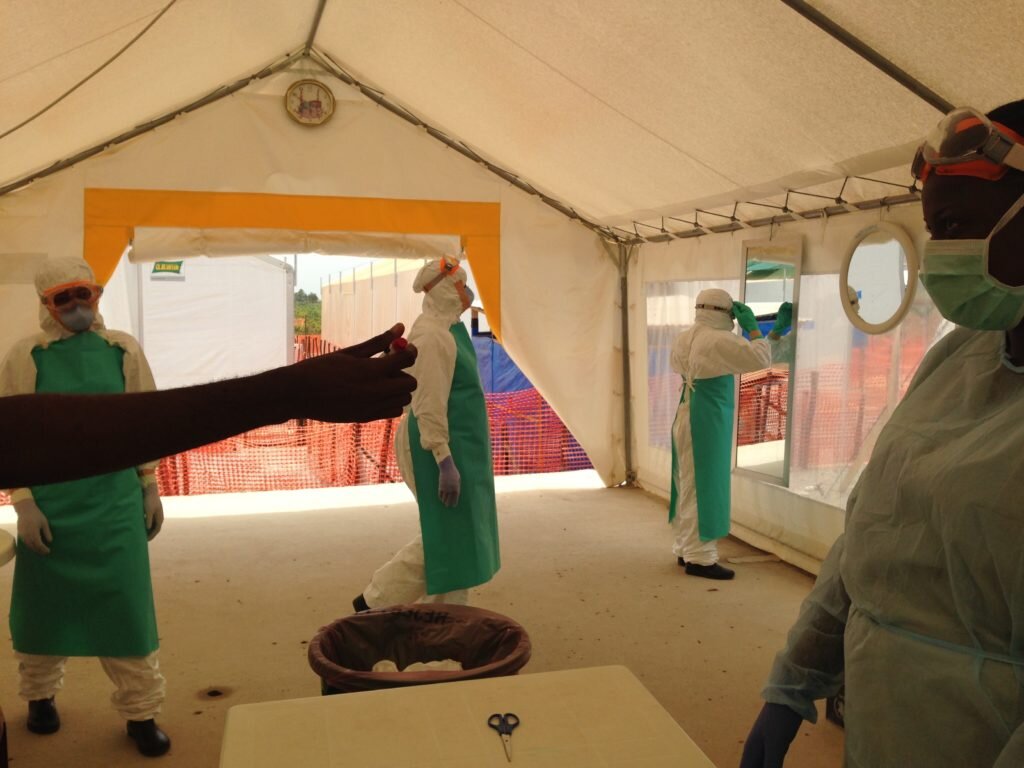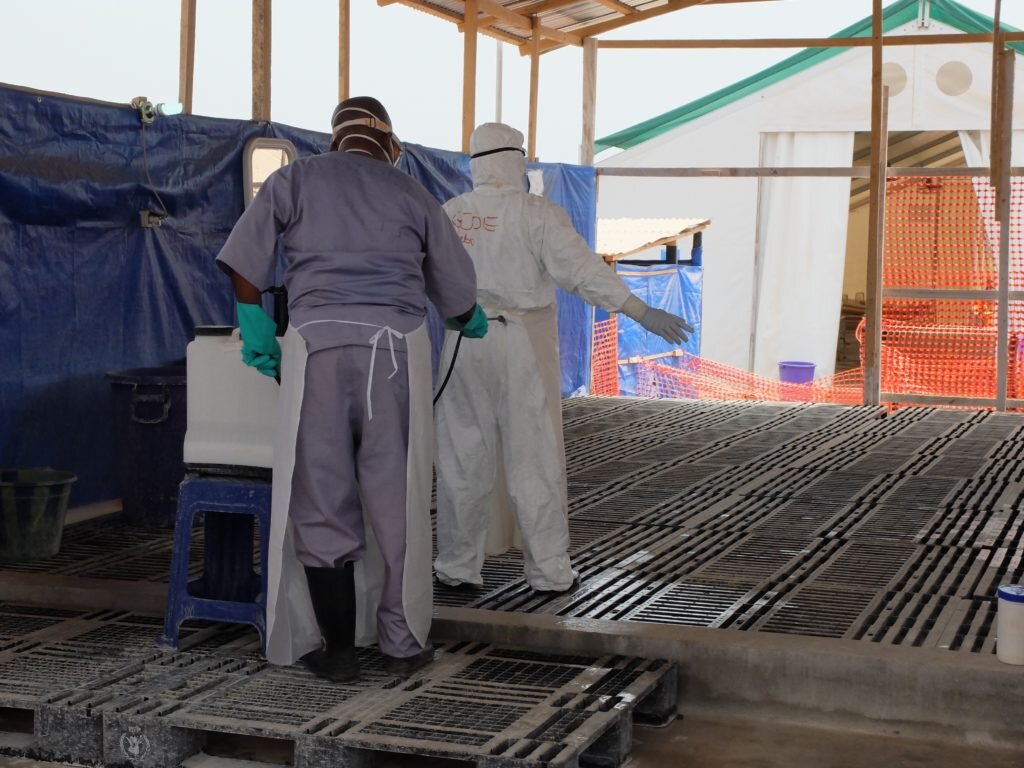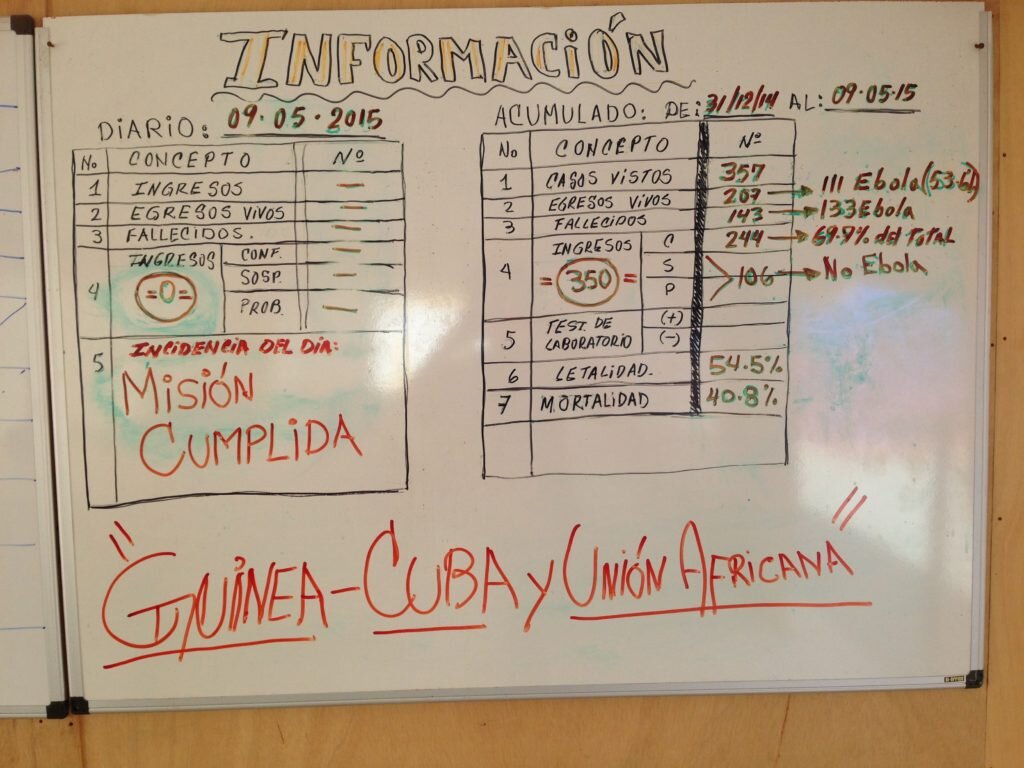Supplementary Material: Gomez-Temesio
Outliving Death: Ebola, Zombies, and the Politics of Saving Lives
By Veronica Gomez-Temesio
ABSTRACT Treatment units were created all across the country with a mission to save lives when the Ebola outbreak hit Guinea in 2014. These units were exceptional sites of biomedical and biosecurity technology. Nevertheless, the concrete procedures to contain the virus reduced the people quarantined to dangerous bodies. The emergency therefore created zombies, haunting figures trapped between life and death. The figure of the zombie shed light on the failure of the humanitarian engagement: when humanitarianism was driven by an ethical imperative of saving lives at any cost, its concrete procedures failed to preserve political and social existence. Zombies also related to the legacy of the slave trade. Connecting the zombie with the postcolonial context of Guinea, I will argue that humanitarian teams were dealing with already devalued lives. Zombies is then another word for pariah citizens of a global world. But people never live in utter subjection. The zombie is thus not only a metaphor for the commodification of life. It also invokes a slave rebellion. Enduring the politics of saving lives, zombies nevertheless resisted the confinement: to the quarantine, but also to our analytical gaze. Zombies are thus the ones who outlive not only death in life but also conceptual death. [life, violence, humanitarian aid, zombie, Ebola]
High Hopes: An Infrastructure to Save Lives

Chlorinated water tanks were essential to disinfection protocols.
 The management tent was the only place with AC.
The management tent was the only place with AC.
The morgue and the incinerators were built just next to the patients’ tents. Patients bodies waited in the morgue to be taken out by the Guinean Red Cross. Toxic waste was incinerated daily.
A wooden ramp was built to connect the caregivers’ tent to the quarantine zone. It was being used to send medicines to care teams on shift or small items (as clothes or water bags) to patients.
Dressing and Undressing for the Quarantine Zone: A Routine of Exception
A hygienist helping a caregiver to dress in personal protective equipment.
Upstage: A medical team ready to enter the quarantine zone. At the forefront: dressed in triage scrubs, a caregiver is talking about a blood sampling with a colleague.
Disinfection protocol at the exit of the quarantine zone. Every caregiver had their name as well as the time of their entry in the quarantine zone written on their back.
After being hand-washed by hygienists, personal protective equipment was dried in the sun.
Captures of the Daily: Making Room for Life
A caregiver is arranging a new room for patients.
Cuban doctors used to have their own statistics board in the unit. Here they left a message–as it was their last day–to their colleagues: Guinea-Cuba-Union Africana Misión Cumplida (Guinea-Cuba-African Union Mission Accomplished).
Night shift inside the quarantine zone.
After having a shower, a little girl is getting ready to exit the quarantine zone.
As the unit was about to close in September 2015, we visited patients' graves at Coyah’s cemetery.
Views from the Outside: Standing at the Edges of Ebola
The road leading to Wonkifong treatment unit
Two-row fences at the main entrance.
The place devoted to family visits.
An ambulance waiting outside the unit.











